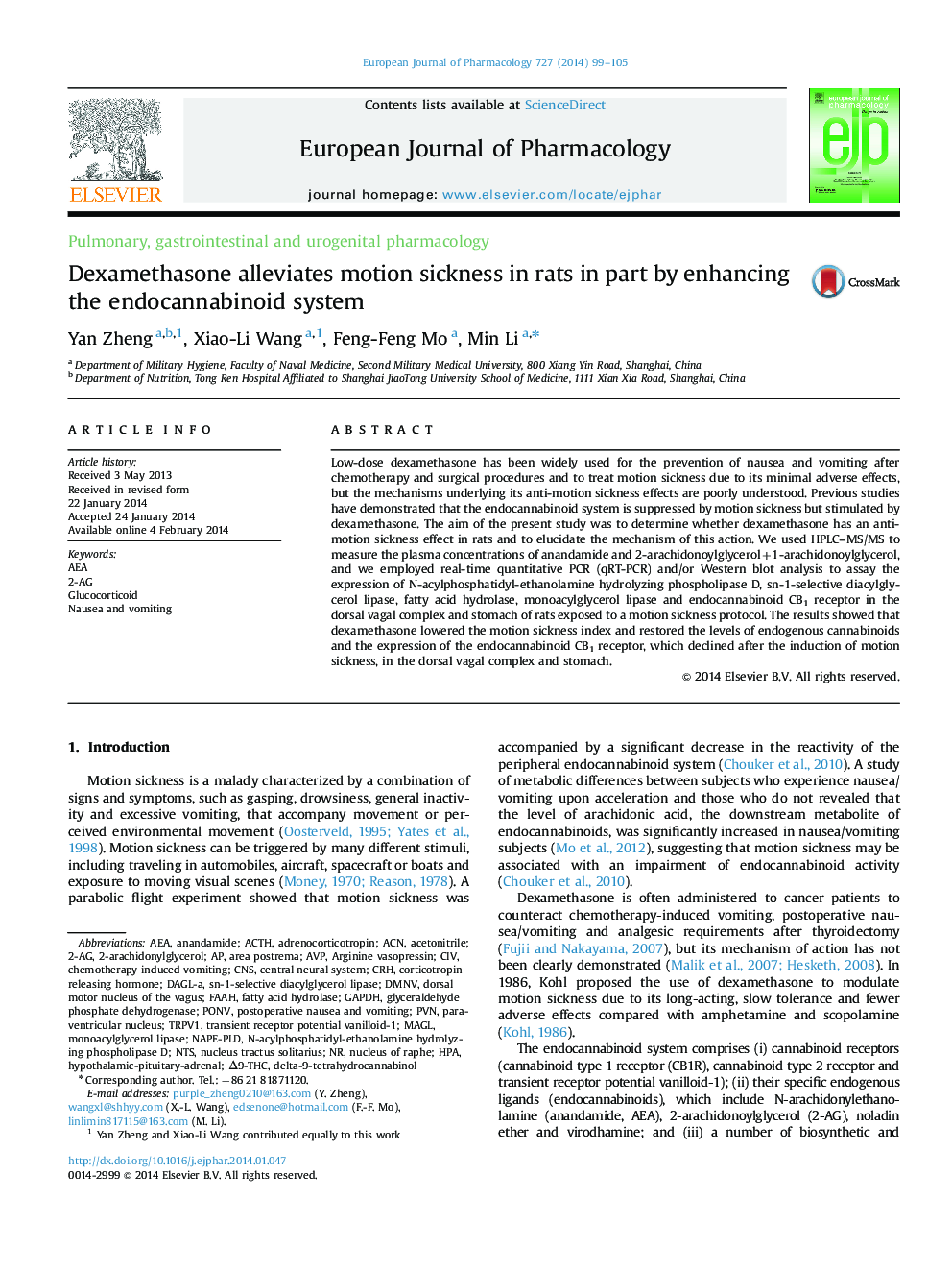| Article ID | Journal | Published Year | Pages | File Type |
|---|---|---|---|---|
| 2531957 | European Journal of Pharmacology | 2014 | 7 Pages |
Low-dose dexamethasone has been widely used for the prevention of nausea and vomiting after chemotherapy and surgical procedures and to treat motion sickness due to its minimal adverse effects, but the mechanisms underlying its anti-motion sickness effects are poorly understood. Previous studies have demonstrated that the endocannabinoid system is suppressed by motion sickness but stimulated by dexamethasone. The aim of the present study was to determine whether dexamethasone has an anti-motion sickness effect in rats and to elucidate the mechanism of this action. We used HPLC–MS/MS to measure the plasma concentrations of anandamide and 2-arachidonoylglycerol+1-arachidonoylglycerol, and we employed real-time quantitative PCR (qRT-PCR) and/or Western blot analysis to assay the expression of N-acylphosphatidyl-ethanolamine hydrolyzing phospholipase D, sn-1-selective diacylglycerol lipase, fatty acid hydrolase, monoacylglycerol lipase and endocannabinoid CB1 receptor in the dorsal vagal complex and stomach of rats exposed to a motion sickness protocol. The results showed that dexamethasone lowered the motion sickness index and restored the levels of endogenous cannabinoids and the expression of the endocannabinoid CB1 receptor, which declined after the induction of motion sickness, in the dorsal vagal complex and stomach.
